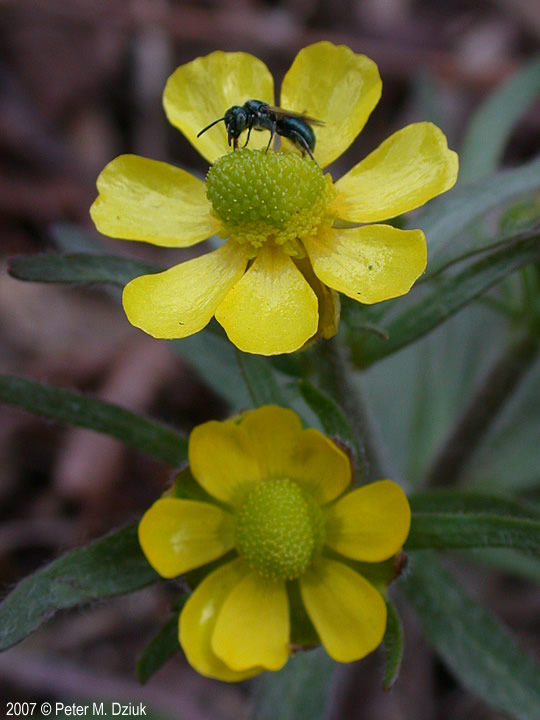BUTTERCUP (BUT) Located at 320 feet in the COLORADO R basin. Query executed Tuesday, 22:58 PST Click on one of the graphs below to plot more data for that sensor. A small, quiet campground, this site is primarily used by river paddlers. Located in stands of mixed hardwoods and pine, campers may be surprised by a wildlife visitor or two while enjoying close-up views of the river. Joyeux noel!. Brochure with map: This brochure is set to.

Back | Salinity Indicator Plants Home | Common name home |Scientific name home | Photo Gallery| Glossary
| Scientific Name: | Ranunculus papulentus | Plants of Large River Buttercup Photo: A J Brown | |||||
Status: | Native to Victoria, South Australia and New South Wales | ||||||
Plant Description: | Small or robust perennial herb with stolons and flowering stems 3–30 cm high. Leaves are hairless, except for a few scattered hairs on the margins. Each leaf is 2–4 cm long and divided into three primary segments, each of which is further divided into 3–5 lobes or teeth. Leaf stalks mostly 4–25 cm long. Flower petals yellow, 7–12 mm long and 2–4 mm wide. Each petal has a small, semicircular or elliptic, lobe towards its base lobe containing nectar. Fruit composed of 12–36 achenes, 1.7–3.6 mm long, irregularly wrinkled or pitted, or rarely smooth. When mature, the achene is often pale and thickened along the dorsal ridge. | ||||||
Habitat: | Grows on wet sites, in freshwater lagoons and along rivers in southern Victoria. Sometimes found on slightly saline sites. Scattered and listed as threatened but poorly known in Victoria by the Department of Sustainability and Environment. Very similar to Brackish Plains Buttercup (Ranunculus diminutus) but generally of larger habit with longer leaves and larger flowers.
|
Muddy leaves of Large River Buttercup Photo: A J Brown | Leaves and flowers of Large River Buttercup Photo: A J Brown |
River Buttercup Plant
Page topTremec 7 speed dct. Ranunculus Inundatus is classified as a stem plant with a unique leaf characteristic. The leaves of this plant resembles radiating stars or firework explosions.

Ranunculus Inundatus is native to Tasmanian wetlands in Australia. Its growth habit is sideways through runners if given enough light, or upwards if light is insufficient. To obtain optimal growth characteristic, Ranunculus Inundatus should be kept in aquascapes with medium to high lighting intensity.
To propagate this plant, simply cut out the nodes and replant them. Each individual plant node is able to create new runners.
Be aware that this plant will lose its older leaves before growing new ones if it has been moved from one aquarium to the other. If you see that they are melting or browning in your aquarium and you are absolutely sure that your water chemistry is fine, leave this plant in there for a few more days. Most of the time this plant will shoot off beautiful and new green offspring.
Ranunculus Inundatus – Plant Profile:
River Buttercup

River Euphorbia

River Buttercup Aquarium
- Position: Foreground, Midground, Background (nano tanks)
- Hardiness: Easy
- Lighting Requirement: Medium to High
- Plant Structure: Stem
- Origin: Tasmania, Australia
- pH: 5.0 – 6.5
- Temperature: 20 – 29° Celsius
- Size: Maximum 7 cm (high light conditions)
- Growth Rate: Fast
- Emersed Culture: Yes
- Price: Moderate to expensive
